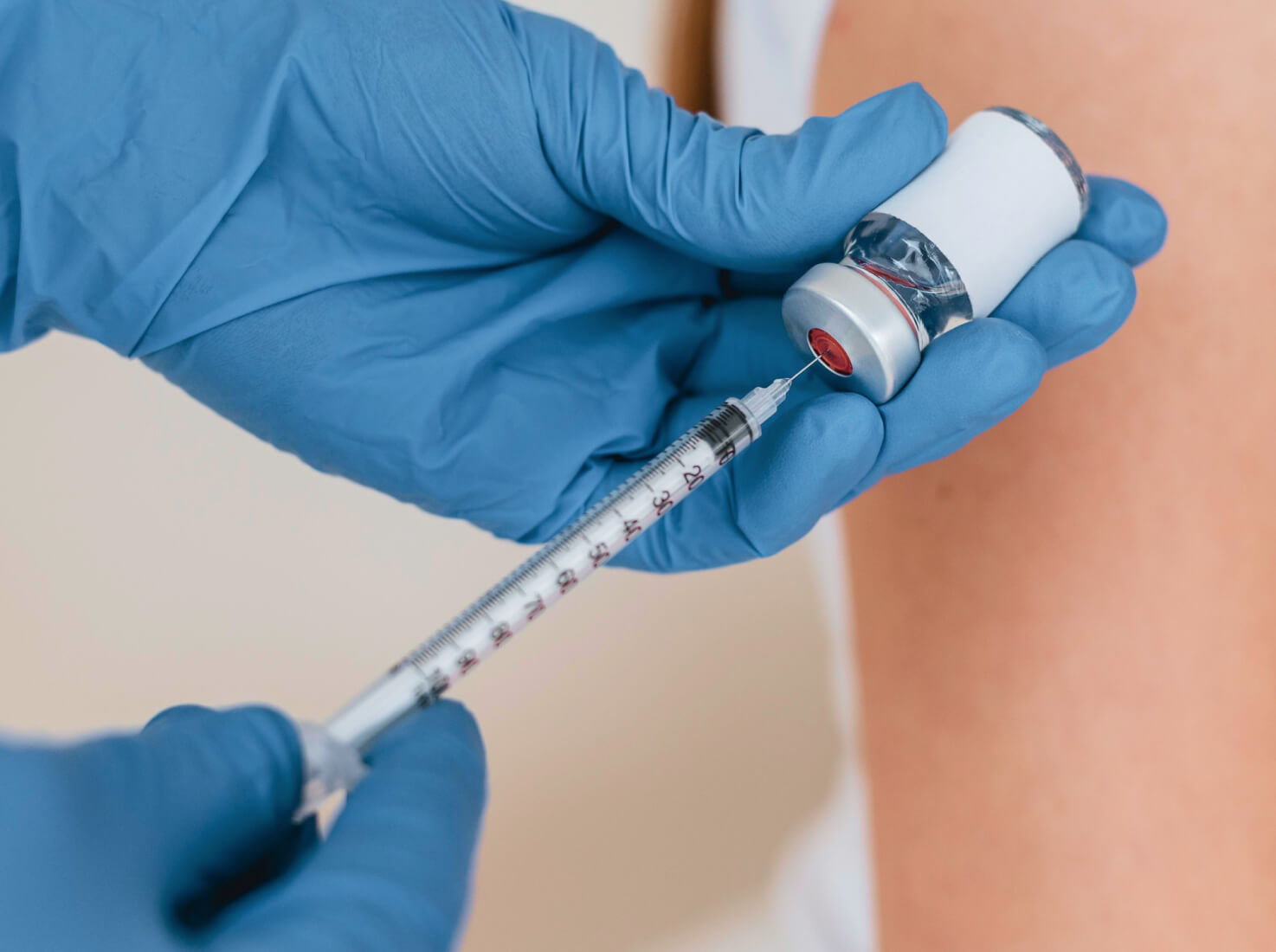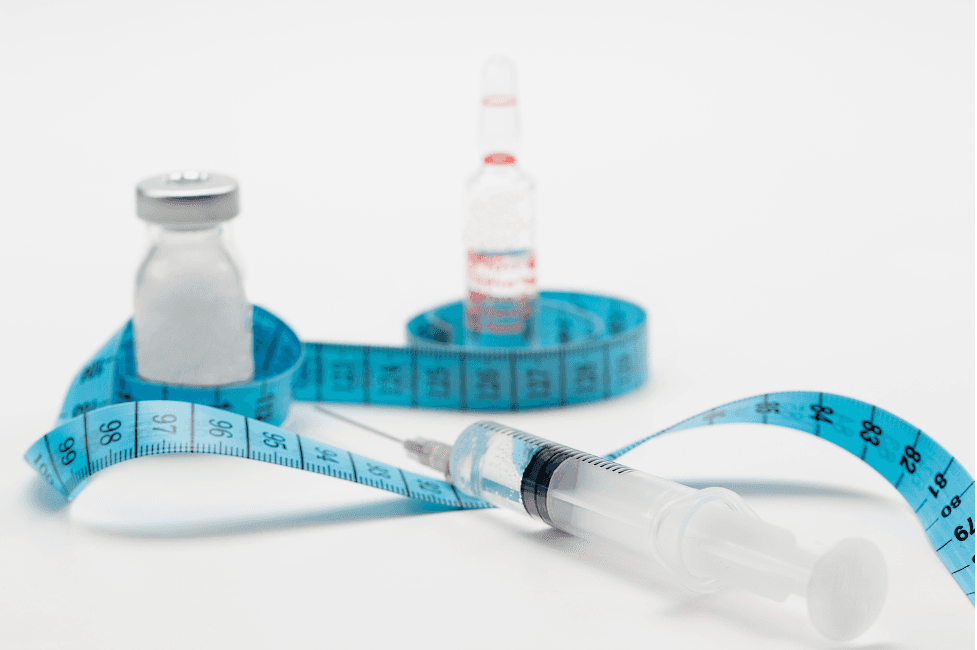
First consultation?

Need a refill?
Avoiding Semaglutide Dosing Errors: How to Measure and Inject Safely
Semaglutide

Eileen Quinones
•
3 mins
• Feb 1, 2025
If you're on a semaglutide weight loss journey with AgeMD, you're already taking a powerful step toward better health. But did you know that one of the most common—and easily avoidable—mistakes patients make is drawing the wrong dose into their syringe?
The FDA recently issued an alert about dosing errors with compounded semaglutide, warning patients and providers about the risks of over- or under-dosing (FDA Alert).
At AgeMD, your health and safety are our top priorities, which is why we’re here to clear up any confusion so you can confidently administer your medication—the right way, every time.

Why Dosing Mistakes Happen (And How to Avoid Them!)
For many patients, self-administering an injection is a new experience—and we get it. Between different syringe sizes, units of measurement, and gradual dose increases, it’s easy to get tripped up.
Common issues include:
✅ Pulling too much medication into the syringe – leading to stronger side effects than necessary.
✅ Not drawing enough – which reduces effectiveness and slows progress.
✅ Confusion between mL, mg, and Units – your syringe often measures in Units, while your dose is in mg and mL!
Let’s break it down in simple, clear steps so you can feel 100% confident every time you inject.

Semaglutide Dosing Schedule
Semaglutide starts at a low dose and gradually increases so your body can adjust smoothly. Here’s a typical dosing schedule for example purposes only—make sure to always follow what your licensed provider prescribes for your unique needs:
📅 Weeks 1–4: 0.25 mg once weekly
📅 Weeks 5–8: 0.5 mg once weekly
📅 Weeks 9–12: 1 mg once weekly
Why does this matter? A slow increase = fewer side effects and better long-term success.

How to Measure the Right Dose Every Time
Your semaglutide solution comes in a specific concentration (often 1 mg per 1 mL, but some compounded versions may have different concentrations—always confirm with your pharmacy)—which means the amount you pull into your syringe depends on your prescribed dose.
mL vs. Syringe Units: What You Need to Know
Many syringes are labeled in Units rather than mL. Here’s how they relate:
1 mL = 100 Units on an insulin syringe
0.25 mL = 25 Units
0.5 mL = 50 Units
1 mg dose (1 mL) = 100 Units
So, if your prescribed dose is 0.25 mg, and your semaglutide concentration is 1 mg/mL, you would draw 0.25 mL (or 25 Units) into the syringe.
Here’s a simple guide:
0.25 mg dose = draw 0.25 mL (25 Units)
0.5 mg dose = draw 0.5 mL (50 Units)
1 mg dose = draw 1 mL (100 Units)
An example of a dosing mistake is found in the FDA report that states:
In several reports, patients were instructed to use a U-100 (1 milliliter) insulin syringe to draw small doses, such as a 5-unit (0.05 milliliter) dose, from a multiple-dose vial.
As depicted in the figure below, these patients were directed to administer 5 units from a vial. However, these patients mistakenly administered 50 units instead.
🛑 Before you inject, double-check these details:
✔ Are you using the correct syringe size?
✔ Are you drawing the exact amount needed?
✔ Do you feel confident in your technique?
If you ever feel uncertain, our AgeMD team is here for you! Ask us before you inject.
Why AgeMD Patients Can Feel Confident
Unlike generic online sources, AgeMD ensures you get expert medical guidance, real-time support, and clear instructions on every aspect of your treatment.
✅ Your provider ensures your prescription is right for you.
✅ We guide you through proper injection techniques.
✅ You get access to trusted compounding pharmacies like Progress Pharmacy.
We believe informed patients see better results—so you can stay on track, feel great, and achieve your goals safely.
Final Takeaway: Knowledge = Confidence
Dosing mistakes can happen, but with the right guidance, you can avoid them completely. By following your provider’s instructions and using this guide, you’re setting yourself up for safe, effective weight loss with semaglutide.
Still have questions? Your AgeMD team is always here to help! 💙
👉 Need a refresher on injections? Schedule a quick chat with your provider.
👉 Looking for trusted pharmacy options? Ask us where to fill your prescription safely.
Your health is our priority—let’s do this right, together. 💪
Current version
Feb 1, 2025
Written by
Eileen Quinones (Nurse Practitioner)
Lose weight effectively
with GLP-1s
Complete our quick questionnaire to identify if you qualify. (approx 3 min)

Sources :
Research, C. F. D. E. A. (2024, July 26). FDA alerts health care providers, compounders and patients of dosing errors associated with compounded injectable semaglutide products. U.S. Food And Drug Administration. https://www.fda.gov/drugs/human-drug-compounding/fda-alerts-health-care-providers-compounders-and-patients-dosing-errors-associated-compounded.
Semaglutide dosage guide + Max dose, adjustments. (n.d.). Drugs.com. https://www.drugs.com/dosage/semaglutide.html
Administration errors of compounded semaglutide reported to a poison control center—Case series Lambson, Joseph E. et al. Journal of the American Pharmacists Association, Volume 63, Issue 5, 1643 - 1645. https://doi.org/10.1016/j.japh.2023.06.017
